Promoting a business on Twitter can be tricky. With 330 million monthly active users posting 500 million tweets per day, it’s easy for yours to get lost in the shuffle.
Not only that, but it’s estimated that the average lifespan of a tweet is a mere 18 minutes. That’s low. And when you factor in Twitter’s ongoing algorithm changes, the chances that anyone will see what you post are really low.
So why bother? Well, there are a lot of good reasons. First, if you have a business, people will expect you to be on Twitter. Your competitors are, and your customers are, too. But Twitter is also a great platform for:
- Announcing the launch of a new campaign or product
- Connecting with customers, influencers and other VIPs in your industry
- Telling your brand story
- Showcasing your best content
If you run a business, Twitter should definitely be a part of your social media marketing strategy. It doesn’t have to be a huge part, because let’s face it: it’s not going to bring in as many leads as Facebook or LinkedIn. But it has the potential to bring in more qualified leads — if you do it right.
On a recent episode of our Marketing School podcast, Neil Patel and I each shared our best Twitter hacks for building connections, growing engagement and bringing in traffic and leads. Give them a try and see if they work for you.
Eric’s Favorite Twitter Hack: Take Advantage of Tweetstorms
When it comes to social media, the name of the game is engagement. If you can get people to engage, you’re going to get them going back to your site. And ten engaged people visiting your site is better than 100 who are just there because they followed a link. That’s why I’m laser-focused and targeted about who I engage with and who I follow on Twitter.
If you want to get serious about Twitter, you have to be organized. Using lists to categorize the people and brands you follow is a great way to 1) get on their radar, and 2) make it easy to find people to engage with. Some of the lists I’ve set up include venture capitalists, entrepreneurs and content experts. And as I’m scrolling through each list, I look for tweetstorms.
Tweetstorms are threaded tweets, usually numbered, that tell a story. That story can be about marketing — the ones I comment on — but you’ll also see stories about politics, parenting and the latest YouTube drama (yes, YouTube dramas are a thing).
If I see one that I feel qualified to comment on, I jump into the conversation. And what usually happens is that the conversation keeps going. It’s something that I didn’t see much of on Twitter before these kinds of threads took off.
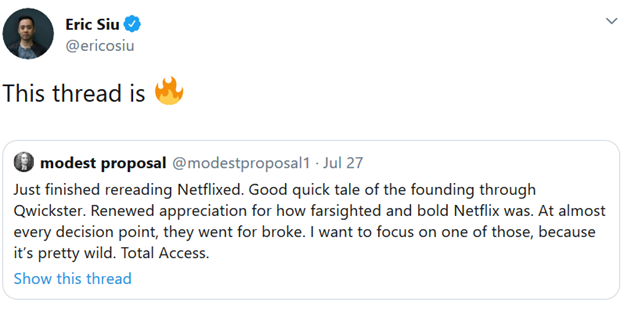 Because the person who owns the thread is posting one tweet after another, the likelihood that at least one of the tweets will be seen is higher. Then you can read through the thread for more context. If someone retweets one of the posts, then the people who follow them will do the same. If enough people are interested in what you have to say, it can be a recipe for going viral.
Because the person who owns the thread is posting one tweet after another, the likelihood that at least one of the tweets will be seen is higher. Then you can read through the thread for more context. If someone retweets one of the posts, then the people who follow them will do the same. If enough people are interested in what you have to say, it can be a recipe for going viral.
You can also use Twitter’s advanced search function to look for conversations that are tailored to your skills and interests:
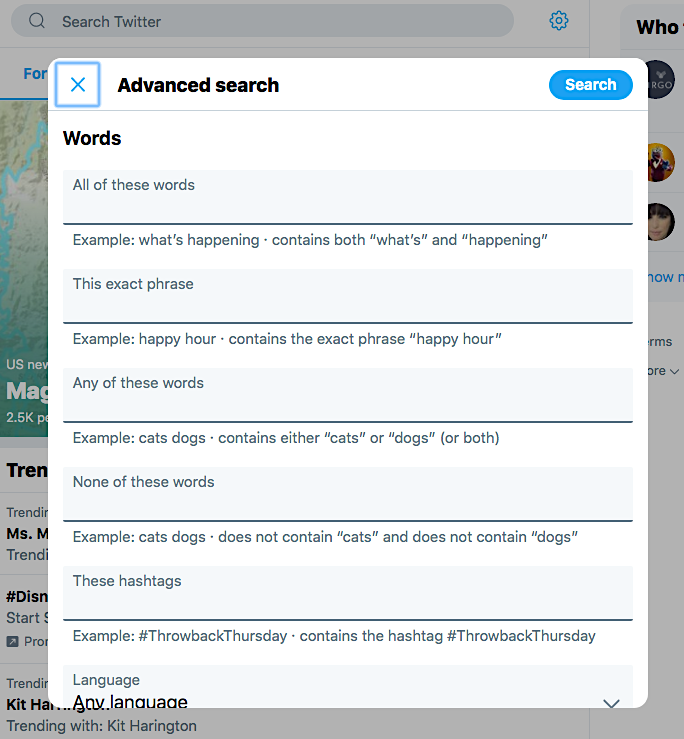
Then, once you’ve read through the entire tweetstorm, jump in or quote-tweet it. But remember: authenticity is important. What you’re trying to do is make a connection — don’t agree just to suck up or disagree to be provocative. Be real.
If you see an opening to promote your product, content or service in a non-spammy way, take it. There have actually been times that I’ve shared something in a tweetstorm and gotten people back to my site.
Is this strategy going to get you a ton of traffic? No. Will it get you more qualified traffic? Most likely. And that’s what important.
Related Content: Do Twitter Ads Really Work? (Or Should You Focus on Other Platforms?)
Neil’s Favorite Twitter Hack: Use Video (but Just a Little Bit)
According to Twitter, tweets with video have 10x more engagement than tweets without. Neil knows how powerful video is — he has about 413K followers on his YouTube channel.
Neil uses Twitter to promote those videos, but he wants the traffic to go to YouTube, so he uploads a portion of his videos — usually the first two minutes or so — directly to Twitter. Then he includes a link to watch the full version. If someone is interested enough to watch the first couple of minutes, they’re probably going to want to click through to watch the rest.
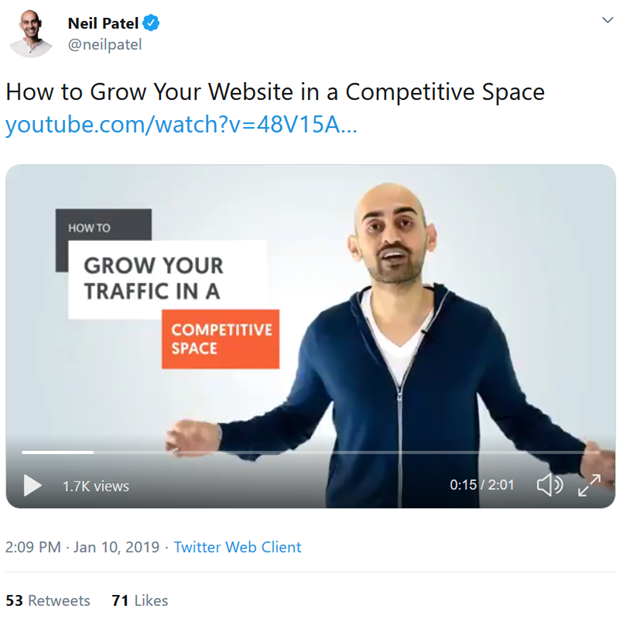
People who watch videos are more likely to convert:
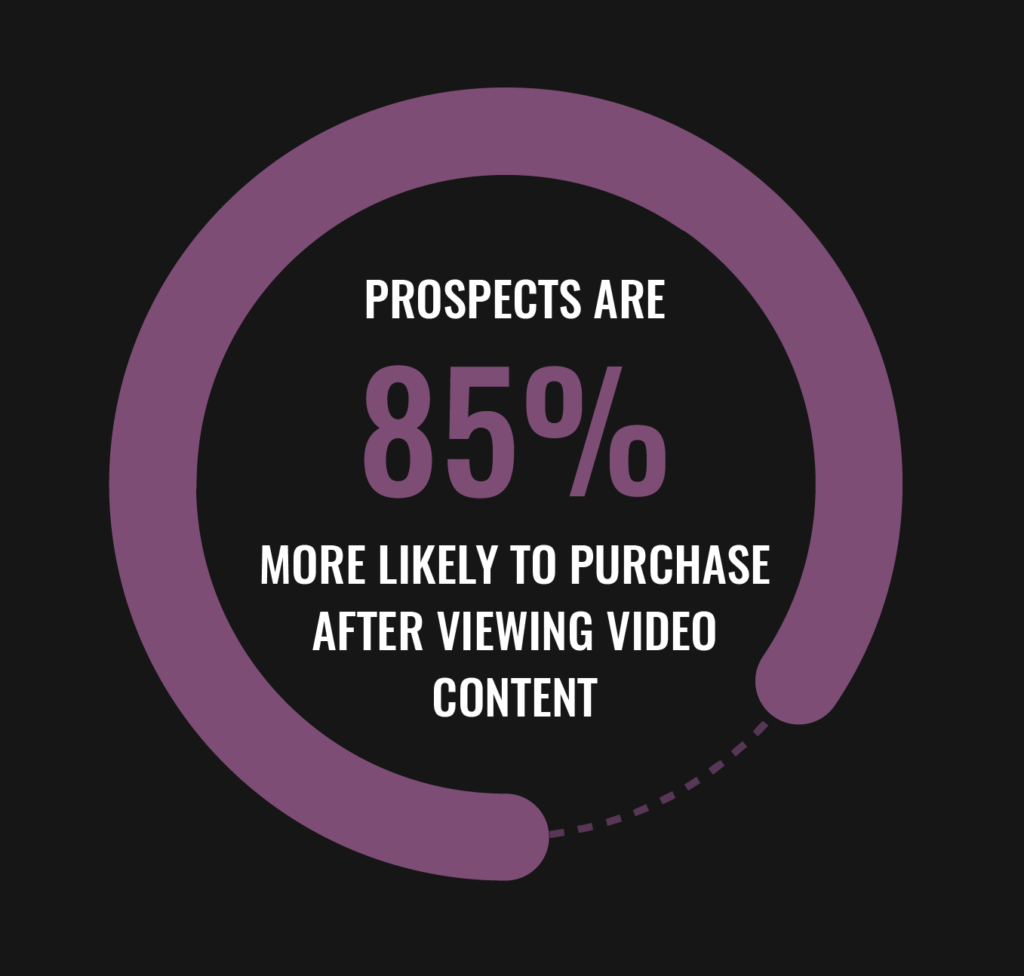
If Neil can get these people to his YouTube channel, he can then promote other videos or links to landing pages — actions that are more likely to lead to conversion than someone simply watching the whole video on Twitter and then scrolling through to the next tweet.
If you use Neil’s strategy, make sure that once someone watches your full video, you have a way to bring them to the next stage in your marketing funnel:
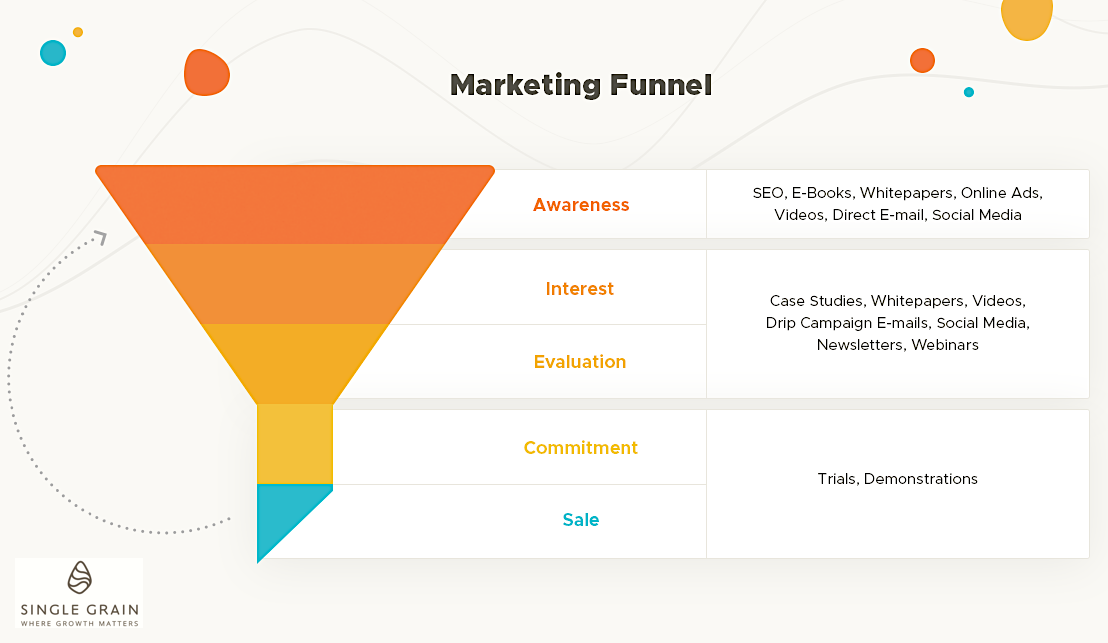
If they’re at the bottom of the funnel, they may do the work of figuring out how to become a client or customer themselves. But those at the middle or top? They will likely just move on to the next video, which may or may not be one of yours.
Related Content: How to Grow Your YouTube Subscribers Without Spending a Ton of Money
More Tips for Growing Engagement on Twitter
Our favorite Twitter hacks are just two strategies for growing engagement and, hopefully, conversions through your Twitter feed. But they aren’t the only ones. These tips will also give your Twitter presence a big boost:
- Pin a tweet: Do you have a popular tweet, or one that explains who you are and what you do? Pin it at the top of your feed so everyone who’s interested enough to go directly to your profile immediately knows what you’re about.
- Engage with followers: Unless you’re dealing with confirmed trolls, you should be engaging with everyone who comments, asks a question, complains or sings your praises on Twitter. If it makes you look good, quote-tweet your response so your followers see it.
- Post consistently: You should post at least once each day, but really, the more, the better. With an 18-minute shelf life, the more tweets you post, the more likely someone is to actually see them. As for when to post, every business is different and every target demographic is different, so you’ll have to test different days and times to see what works for you, your business and your audience. Make sure to try nights and weekends, too; you might be surprised by the response you get during “off” hours.
- Mix up your tweet types: The more varied your feed is, the more interesting it looks to someone deciding whether or not to follow you or to engage with your content. Don’t just use Twitter as a URL dumping-ground. Post links to articles (yours and others’), images, video and straight-up text.
- Use hashtags (but not too many): Industry-specific hashtags are a great tool for increasing your visibility with the right people. For example, in the marketing world, we use hashtags like #SEO, #contentmarketing and #branding. If you can jump onto a trending hashtag, even better (but check why it’s trending first). And if you attend a conference, trade show or other industry event, make sure to tweet frequently and always use the hashtag provided by the organizers. But don’t overdo it — one or two a day is enough.
Related Content: Social Commerce: The Easiest Way to Turn Social Engagement into First-Time Buyers
6 Tools to Help You Get the Most Out of Twitter
If you’re going to invest your time and resources into growing engagement on Twitter, there are a ton of tools that can help make management and analytics easier. Here are some of the tools worth checking out:
- MeetEdgar: This automation tool allows you to schedule and repost your content. It’s especially useful for popular, evergreen content that you want to push out to Twitter on a regular basis. It’ll even write tweets for you for maximum time savings.
- TweetDeck: Owned by Twitter, this management tool allows you to schedule tweets and manage multiple accounts. The best feature is the ability to display different feeds in side-by-side columns. Those columns can be a search query, hashtag, replies or even your competitors’ feeds.
- Bitly: Twitter shortens any links posted in tweets, but Bitly is more than just a shortening service. Twitter’s analytics don’t give you a ton of information, but Bitly has a much more robust data offering.
- Commun.it: This Twitter follower management tool helps you keep track of and prioritize mentions, get suggestions on who to follow and engage with, find ideas for content and learn the best times to post for your audience.
- SocialRank: This tool analyzes your Twitter audience so that you can zero in on your ideal customer or client, and then market directly to them.
- AgoraPulse: Two features that set AgoraPulse apart from other Twitter management tools are its automated inbox assistant and real-time team collaboration.
Many of these tools are premium ones, but they come with a free trial. Try them out before you decide which ones will best meet your needs.
Related Content: 10 Content Marketing Tools that Can Help You Increase Engagement on Twitter
Your Best Twitter Marketing Hack Is Strategy
There’s some truth to the fact that, if everyone else is on Twitter, you should be, too. But you also need business-related reasons. That’s where your Twitter marketing strategy comes in. Before you dive into the platform, define your strategy with a few easy steps:
Step 1: Define Your Objectives
What do you want to accomplish by marketing on Twitter? Your stated objectives could be as simple as connecting with a certain number of influencers, or as complex as bringing in a defined number of sales.
Step 2: Look at Your Competitors
What are your competitors doing well? Not so well? Conducting an analysis of their strengths and weaknesses will help you define where you can shine. Maybe your biggest competition is just pushing out content and not engaging with users who reply with comments or questions. You can make engagement a priority to set yourself apart.
Step 3: Analyze Your Customer Data
Who are your customers? What do they want and need? If you have a solid content marketing strategy, then you likely already know the answers to those questions. Your Twitter feed is just an extension of your overall marketing strategy, so make sure your tactics align with it.
Step 4: Test and Repeat
Marketing is about testing until you figure out what works — and then testing some more to make it better, over and over again. Your Twitter feed probably isn’t going to blow up overnight, but having realistic expectations and being willing to try everything will go a long way toward building your strategy and defining success.
Related Content: The Beginner’s Guide to Crafting a Highly Effective Social Media Strategy in 2019
Final Thoughts
Twitter may not be the most important channel for your social media marketing campaigns, but it’s still important to keep it in the mix and find ways to get maximize your engagement on the platform. Twitter has been a huge part of my growth here at Single Grain — I hope it helps you grow your business, too!

